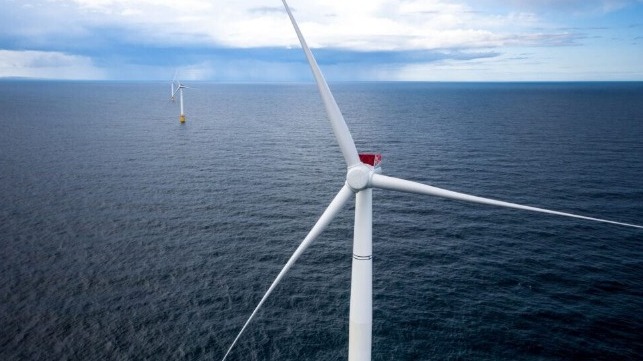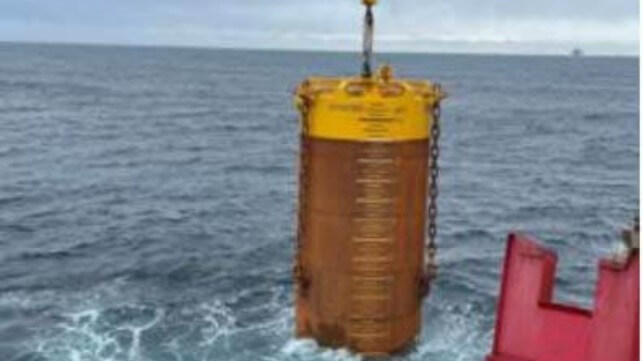Ireland Releases Draft Plan for South Coast Offshore Wind Farms

Ireland released a draft of its plan to designate four areas off the south coast for offshore wind projects and proceed to auctions. It follows the successful first offshore auction in May 2023 where over 3 GW of capacity was procured from four offshore projects.
The Minister for the Environment, Climate and Communications, Eamon Ryan, released the plan on May 3 highlighting that it is Ireland’s first-ever spatial plan for renewable energy at sea. The draft South Coast Designated Maritime Area Plan (DMAP) identifies four maritime areas off the south coast in which development of offshore renewable energy is proposed to take place over the next decade.
The four maritime areas proposed for offshore energy projects were identified according to the minister following a comprehensive environmental assessment process and an almost year-long engagement process with coastal communities and stakeholders. He said that protecting the marine environment and biodiversity and supporting citizens reliant on the sea for their livelihood are central to the sustainable development of the south coast’s offshore energy potential.
The draft plan proposes that a first offshore wind project with a capacity of approximately 900 MW will take place in “Tonn Nua,” off the coast of County Waterford, and will aim for deployment by 2030. The area is more than 120 square miles located at least nearly eight miles from shore. It has a mean water depth of 187 feet.
Over the next decade, the plan also proposes further offshore wind projects will be developed off the coast of Country Waterford as well as two sites off the south coast of County Wexford. They include “Li Ban” which would be at least 18 miles from Country Waterford at its nearest point. The “Manannan” site would be nearly 17 miles from Country Wexford while the “Danu” site would be a similar distance also from Country Wexford.
The draft design for the auction is now available for public comments running through June 7, 2024. The ministry notes that it may choose to revise the plan based on feedback, The auction is planned to commence before the end of 2024.
The first auction in May 2023 created the potential for the delivery of over 12 Terawatt hours of renewable electricity per year. Ireland’s Climate Action Plan 2024 commits to achieving at least 5 GW of installed offshore wind capacity by 2030. A further 2 GW is designated for the production of green hydrogen and other non-grid uses.
BOEM Completes Review for Alternative Foundation Test at BP’s Beacon Wind

The U.S. Department of the Interior’s Bureau of Ocean Energy Management completed its environmental review clearing the way for testing of an alternative foundation for the Beacon Win site located south of Nantucket. The site now controlled by BP proposed additional site testing for a lesser-used technology called suction bucket foundations which allows for the installation of turbines without the need for pile driving.
Deployed for the first time a decade ago, the suction bucket has been used several times in European offshore wind farms, including projects led by Ørsted. The application by BP highlighted advantages including less noise by not having to pile drive and less disturbance of underwater life. BP and its partners have also been exploring the use of the foundation system for their developments in Europe.
The technology has been used in various forms since the 1980s in the offshore oil and gas industry. Ørsted explains that one of the key considerations is soil type and soil strength as well as issues such as the composition of the sea bed if boulders or other obstacles exist. They require a larger footprint and scour protection.
Beacon Wind proposed to conduct 35 deployments and removals of a single suction bucket foundation at 26 locations on its site. Beacon Wind’s objective is to gather information to support the engineering design of the turbine and substation foundation. Among the other advantages, Beacon Wind says suction bucket foundations would allow more flexibility around supply chain constraints.
The proposal explains that the suction bucket used in the test will have a diameter of 30 to 39 feet (9 to 12 meters), a height of 36 to 39 feet (11 to 12 meters), and total weight of approximately 200 tons. The suction bucket will be designed to penetrate the seafloor to a maximum of between 33 and 39 feet (10 and 12 meters), versus a monopile which they pile drive to three times that depth. A low-flow suction pump is mounted to the top of the suction bucket approximately 19 feet (6 meters) above the seabed and slowly removes water from within the bucket to create an area of reduced pressure, which would assist in completing penetration to the target depth and affixing the structure to the seabed for the mounting of the topside turbine or substation.
BOEM concluded that the proposed test will not cause significant impacts to the environment. Beacon Wind’s review with the BOEM began nearly a year ago. It calls for two phases, with the first project for 1,230 MW located 17 nautical miles south of Nantucket and 52 nautical miles east of Montauk and supplying power to New York State. A second phase of a similar size is also contemplated on the lease area which totals 128,000 acres in federal waters.
In April, BP took full ownership of Beacon Wind after splitting its partnership with Equinor. They took over the 50 percent interest in the project. while Equinor took ownership of BP’s 50 percent stake in the Empire Wind 1 and 2 projects.
No comments:
Post a Comment